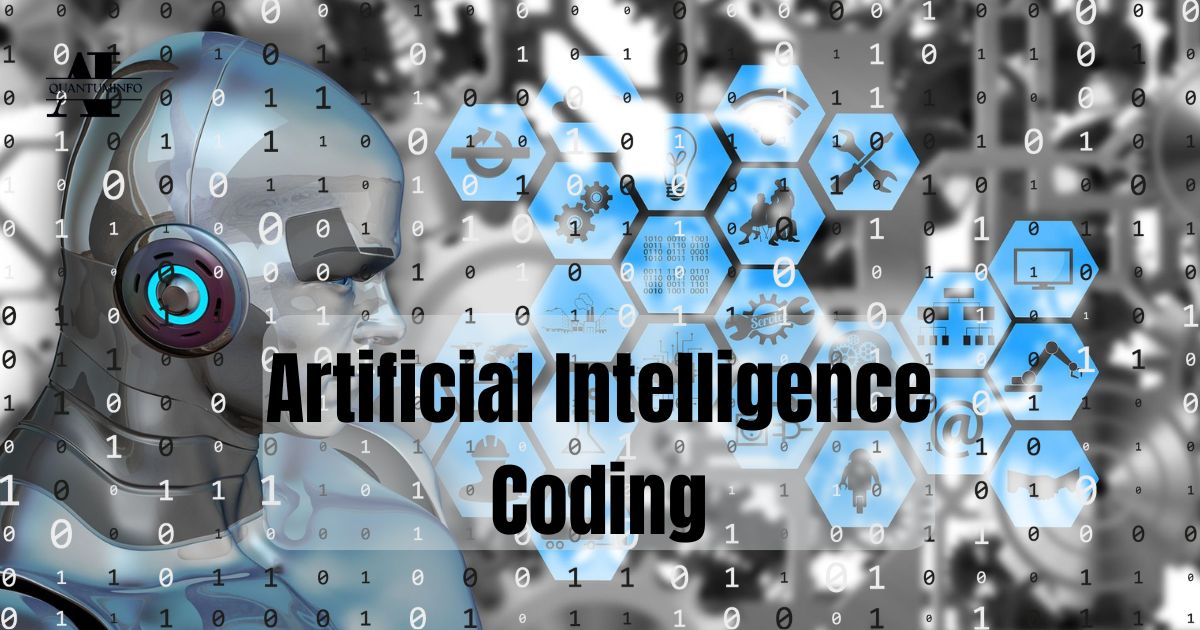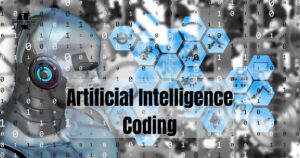Artificial intelligence (AI) coding is rapidly changing how developers approach programming tasks. AI tools now assist in writing, debugging, and optimizing code by harnessing the power of machine learning and advanced algorithms. This post delves into the best AI for coding, effective ways to learn AI coding, the mechanics of AI code-generation software, and general-purpose generative AI applications.
The Evolution of AI in Coding
The journey of AI in coding began with simple rule-based systems that could automate repetitive tasks. Over time, advancements in machine learning and natural language processing transformed these systems into intelligent assistants capable of understanding context and generating code. Today, developers leverage AI to enhance productivity, reduce errors, and streamline workflows.
Top AI Tools: A Developer’s Best Friends

When it comes to AI coding tools, several stand out for their capabilities and ease of use. Let’s explore the most prominent options available.
GitHub Copilot: Your AI Pair Programmer
GitHub Copilot, developed by GitHub in collaboration with OpenAI, serves as an AI pair programmer. It suggests lines of code or entire functions as you type, effectively streamlining the coding process.
- Strengths:
- Supports multiple programming languages, including Python, JavaScript, and TypeScript.
- Learned from a vast repository of public code, ensuring relevant and context-aware suggestions.
- Limitations:
- May struggle with highly specific or niche programming tasks.
- Suggestions can sometimes be incorrect or suboptimal, requiring developers to review and refine the output.
Tabnine: Personalised Code Completions
Tabnine is another robust AI-powered coding assistant designed to enhance productivity. It uses deep learning to provide code completions based on the context of your work.
- Strengths:
- Customizable according to individual or team preferences.
- Integrates seamlessly with popular IDEs like Visual Studio Code and IntelliJ IDEA.
- Limitations:
- May require training on specific codebases to optimize its suggestions.
Kite: The Python Pro’s Companion
Kite stands out for its focus on assisting Python developers, although it supports other languages as well. With its advanced code completions and in-line documentation, Kite enhances the coding experience significantly.
- Strengths:
- Offers a unique feature called “Kite Copilot,” which provides line-by-line code suggestions.
- Includes a search feature for documentation, making it easier to find relevant information.
- Limitations:
- Limited to specific programming languages, which might not suit all developers.
Do you Want to know about Leonardo AI - Read More
Codex: Bridging Language and Code
OpenAI’s Codex, the underlying model behind GitHub Copilot, is a powerful tool capable of generating code from natural language prompts. This makes it incredibly useful for prototyping and learning.
- Strengths:
- Capable of understanding complex instructions and translating them into various programming languages.
- Excellent for educational purposes, helping learners grasp coding concepts.
- Limitations:
- Still in development, and its capabilities may vary across different programming languages.
Comparison Table of AI Coding Tools

| AI Tool | Supported Languages | Key Features | Limitations |
| GitHub Copilot | Python, JavaScript, TypeScript | Context-aware suggestions | May produce incorrect suggestions |
| Tabnine | Multiple languages | Deep learning-based completions | Needs training on specific codebases |
| Kite | Primarily Python, others | In-line documentation and code completions | Limited language support |
| Codex | Multiple languages | Natural language to code conversion | Development phase limitations |
Navigating the Learning Curve: Mastering AI Coding
Learning AI coding can seem overwhelming, but with the right approach, it becomes manageable and even enjoyable. Here’s a structured path to mastering AI coding.
Laying the Groundwork: Programming Fundamentals
Before diving into AI, ensure you have a solid grasp of programming basics. Start with languages like Python, which is widely used in AI and machine learning.
- Suggested Resources:
- Codecademy for interactive coding lessons.
- Coursera and edX offer online courses in Python programming.
The AI Landscape: Core Concepts to Grasp
Once you’re comfortable with programming, begin exploring foundational AI concepts such as:
- Machine Learning: Understand supervised and unsupervised learning, neural networks, and decision trees.
- Natural Language Processing (NLP): Learn how AI can interpret and generate human language.
Hands-On Learning: Bringing Theory to Life
Applying your knowledge through projects is crucial. Try building applications that incorporate AI features. For example:
- Chatbots: Create a simple chatbot using NLP techniques.
- Image Recognition: Use TensorFlow to build an image classifier.
These projects enhance your skills and provide tangible proof of your capabilities.
The Power of Community: Learning from Peers
Participating in online forums and communities can offer support and resources. Websites like GitHub, Stack Overflow, and Reddit’s r/MachineLearning are great places to connect with other learners and professionals.
Recommended Learning Resources
- Books:
- Python Machine Learning by Sebastian Raschka
- Deep Learning by Ian Goodfellow
- Online Courses:
- Andrew Ng’s Machine Learning Course on Coursera
- Deep Learning Specialization also on Coursera
Demystifying AI Code-Generation Software
AI code-generation software automates the coding process, using algorithms to interpret user inputs and generate relevant code snippets. This technology has gained traction due to its ability to enhance productivity and reduce repetitive tasks.
Do you want to know about Stanford University - Read More
Breaking it Down: How AI Generates Code
- Input Processing:
- Users provide input in natural language, specifying the desired functionality or task.
- Model Interpretation:
- The software employs natural language processing (NLP) models to interpret the input. This involves breaking down the request into understandable components.
- Code Generation:
- Based on the interpreted request, the software generates code snippets that fulfill the user’s requirements. This step leverages machine learning models trained on vast datasets of code.
- Output Validation:
- The generated code undergoes validation to ensure it meets standard coding practices. Some tools may also provide suggestions for optimizations or improvements.
The Upsides of AI in Code Generation

- Increased Efficiency: Automates routine coding tasks, allowing developers to focus on more complex problems.
- Error Reduction: Minimises human errors by generating code that adheres to best practices.
- Learning Aid: Helps new developers learn by providing real-time examples and explanations of code.
A Closer Look at Leading Tools
- OpenAI Codex: As mentioned earlier, Codex translates natural language into code and supports various programming languages.
- Kite: Offers code completions and documentation, enhancing the coding experience for developers.
- DeepCode: Utilises AI to analyze codebases and suggest improvements, enhancing code quality.
Case Study: Revolutionising Web Development with AI
Consider a web development team that frequently builds similar applications. By integrating AI code-generation software, they can automate the creation of boilerplate code for new projects. This not only saves time but also ensures consistency across applications. The team can then focus on custom features and user experience, ultimately leading to better products and happier clients.
Generative AI: Beyond Coding
Generative AI applications go beyond coding. They encompass various fields, demonstrating the versatility of AI technology. Here are some notable examples:
Crafting Content: AI in Writing and Journalism
Generative AI tools can create written content, from articles to marketing copy, effectively assisting content creators. For instance, tools like Jasper and Writesonic use AI to generate coherent and relevant text based on user prompts.
Artistic Innovations: AI in Design and Visual Arts
AI applications like DALL-E and Midjourney can generate stunning artwork from textual descriptions. This has opened new avenues for artists and designers, allowing them to explore concepts that might not have been feasible manually.
The Sound of AI: Music Creation Tools
Generative AI is making waves in music, with platforms like OpenAI’s MuseNet composing original pieces in various styles. This technology provides musicians with inspiration and new ideas.
Gaming Redefined: AI in Interactive Experiences
AI is revolutionizing game design, enabling the creation of dynamic environments and characters that adapt to player behavior, enhancing immersion and engagement.
Healthcare Revolution: AI’s Impact on Medicine
In healthcare, generative AI is used to design drugs and predict disease outbreaks by analyzing vast datasets, improving patient care and treatment outcomes.
Final Thoughts
Artificial intelligence coding represents a significant leap forward in the world of software development. As AI tools become more sophisticated, they empower developers to enhance their productivity, streamline workflows, and reduce errors. From AI pair programmers like GitHub Copilot to specialized tools like Kite, the options available today cater to a wide range of programming needs.
Learning AI coding is an exciting journey that combines foundational programming skills with advanced concepts in machine learning and natural language processing. By engaging in hands-on projects and connecting with communities, aspiring developers can deepen their understanding and stay current with industry trends.
Moreover, the impact of AI extends beyond coding, influencing fields such as content creation, design, music, gaming, and healthcare. As generative AI evolves, its applications will broaden, leading to innovative solutions that enhance creativity and efficiency across various domains.
In summary, embracing AI in coding prepares developers for the future and opens up new avenues for creativity and problem-solving. As we move forward, the synergy between human ingenuity and artificial intelligence will undoubtedly shape the next era of technology, making it an exciting time to be a part of this dynamic landscape.









